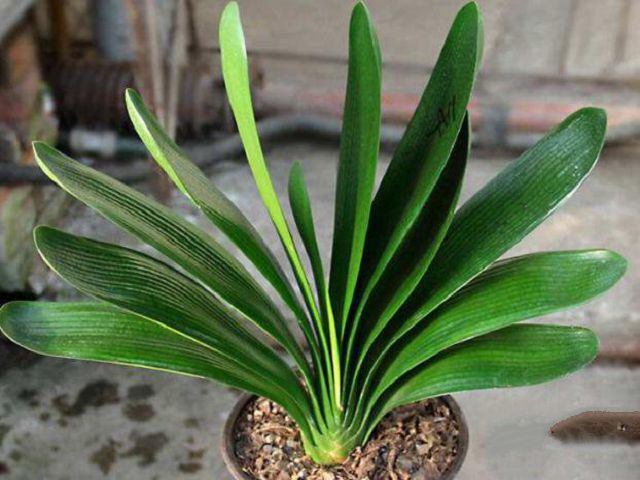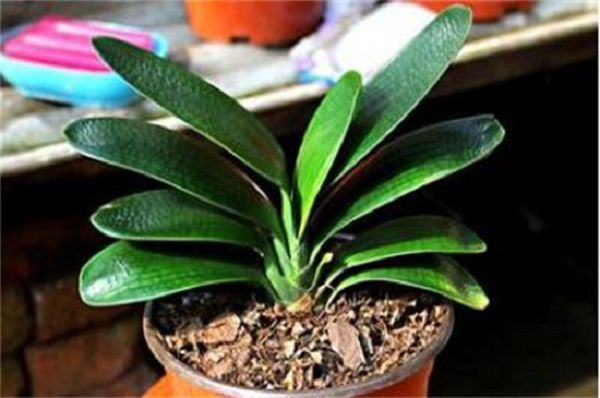How to deal with the rotten roots of orchids? smear the wound with potassium permanganate and then dry and sterilize.
Gentleman orchid is a kind of herb, many people will put it at home to purify the air, but also can watch, it can be said to kill two birds with one stone. But we often find the rotten root of Cymbidium, what is the cause of this, and how to deal with it?
One or three steps to deal with the rotten roots of Cymbidium
The rotten root of the gentleman orchid is indeed a headache for many flower friends, and there are also many cases that cause its rotten roots. We can control the water and change the soil to solve external factors such as soil and water. What should we do best to deal with the rotten roots?
1. Take out the whole plant
When raising orchids at home, if you encounter the rotten roots of orchids, do not throw away the whole plant directly, there is still a way to remedy it. We first take the rotten root of the magnolia out of the soil and cut off the roots. here, in order to ensure that its root system is not broken, it is best to break the basin soil and gently take it out.
2. Clean up the rotten roots
Then rinse the root with clean water, smear it evenly on the wound of the root of Cymbidium with potassium permanganate solution, wrap all the leaves with white paper towels, leave the root outside, put it in the sun for half an hour, and kill the germs first.
3. Plant to new soil
After completing the above steps, we can replant it into fresh soil, which is best sterilized first. So how often is the gentleman orchid watered at this time? It is really important to pay attention to this problem. In the first half month of planting, the amount of water must be controlled and watered as little as possible. After a month and a half, it can be cultivated according to the normal maintenance method.
Second, the three most common cases of rotten roots of Cymbidium
Know how to deal with the rotten root of the gentleman orchid, then we should also analyze the rotten root caused by what reasons and the solution. There are many reasons for the rotten roots of Cymbidium, such as excessive fertilizer, unsuitable soil quality and stagnant water in basin soil, which will lead to the occurrence of rotten roots. So we must master the maintenance methods of Cymbidium in the process of cultivating Cymbidium at ordinary times, so what about the rotten roots caused by these reasons?
1. Excessive fertilizer
As with most plant conservation, excessive fertilization can easily burn the roots of the orchid, and then the roots will rot, and after the roots rot, the leaves will not be able to absorb nutrients, and the whole plant will slowly wither and wither.
Solution: if the rotten roots caused by excessive fertilizer, then we must first remove the rotten roots, so as not to continue to affect the whole plant. Then we must pay attention to the application of fertilizer in the usual process. If we are afraid of applying too much fertilizer, we can dilute the fertilizer and water before applying fertilizer.
2. The soil is not suitable.
Soil is the most basic condition for a plant to survive. If the soil is impervious, alkaline and hardened, these will cause the rotting roots of Cymbidium. The same as the root rot symptoms caused by many factors, the leaves are also yellowing.
Solution: if the soil is not suitable, then we will change the soil. The soil suitable for the growth of Cymbidium must be permeable, loose and rich in organic matter. Therefore, we can choose different substrates such as rotten leaf soil, vegetable garden soil, pond mud, compost soil, plant ash, river sand and so on to make the soil for cultivating Cymbidium.
3. The stagnant water in the basin soil is impervious.
Because the stagnant water in the basin soil is impervious, the rotting root of Cymbidium is the most serious, and this situation is most likely to occur in summer, autumn and rainy season. In summer and autumn, some of our flower friends will feel that the weather is too hot, so we pour a lot of water on the magnolia, or too many raindrops float into the basin soil during the rainy season, but the permeability of the basin soil is not good, which will lead to stagnant water. then the roots will rot if we don't deal with them in time.
Solution: therefore, we must pay attention to the method of watering magnolia in summer and autumn, and never water it blindly because of the high temperature. We can follow the method of watering thoroughly, that is, pouring thoroughly when it is dry, but not too much. If the bottom of the basin is leaking, there is too much water.
Related
- Is the orchid suitable for indoor use? Is it good for the body?
- How to prevent the empty root of orchids?
- What to do after the crab claw orchid is withered?
- Why are the leaves of orchids always yellow? Fertilizing and watering.
- Can the root of the gentleman orchid be saved if it is rotten?
- Diagnosis and treatment of cotton-blowing beetle insects in Cymbidium
- There is a way for a gentleman's orchid to rot.
- What is the most suitable temperature and humidity for the orchid?
- How to raise a gentleman's orchid? Cultivation techniques of Cymbidium
- How to prepare the nutritive soil for the cultivation of Cymbidium



